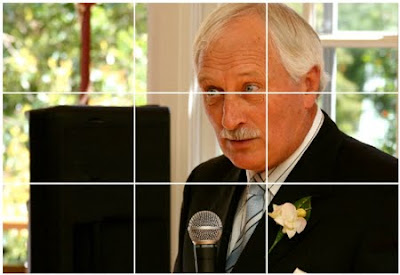- Use 10 of them at least once in our pop video.
- Write about each of them, with images, in our blog.
- Use a number of them (not all ten) in our exam essay as examples of our improvments in knowledge skills.
COMPOSITION RULES
All start from what we are trying to say, out hypothesi, our meaning.- Different type of shot size

- Camera position and Angle (up shot, down shot)
- Camera movements
- Lighting
- Rule of thirds
- Leading the eye

- Colours
- Shapes and lines
- Detail arrangment in the frame
- Editing styles
Here is an illustration from 3 of the conventions -
Different shot types : There are a variety of different camera shots that can be used , the most commonly used are these.
Extreme Closeup - This would be used to emphasise a part of the body i.e an extreme close up on the eye to show wherabouts they are looking or of someone painting there nails showing that they are care about there appearance. Close Up - This would show detail in the face and emotions that a star would have i.e a close up of Tom Cruise crying
Mid Shot - This is a comfortable shot that is most commonly used.
Long Shot - This is a shot used in action and to show the props and costumes surrounding the actor and the landscape/ setting that the film/ scene is in. Wide Shot - This is used as an establishing shot and to show the context. Very Wide Shot- This is used to show the landscape and / or would be used to show space. CAMERA MOVEMENTS - This would be either tracking,crane, tilt, dolly, crab or possibly panning. Tracking is when a movement which stays a constant distance from the action, especially side to side movement. Crane would be when a camera was put onto a crane making swooping images and quick bird like feel. Tilt would be vertical movement of the camera angle i.e pointing the camera up and down. Dolly is when the camera is mounted on a cart which travels along tracks for a very small movement. Also known as tracking shot. Crab again is a less common term for tracking. LIGHTING -
This is when the actor/band/performist has to be lighted in order for the audience to aknowledge who they are , they have to be lit from 3 different angles. Each angle has a different name;
There are also certain colours that have to be used in order for you to reflect to the audience your emotion/personality. Rule Of Thirds - The basic principle behind the rule of thirds is to imagine breaking an image down into thirds (both horizontally and vertically) so that you have 9 parts. The theory is that if you place points of interest in the intersections or along the lines that your shot becomes more balanced and will enable a viewer of the image to interact with it more naturally. Studies have shown that when viewing images that people’s eyes usually go to one of the intersection points most naturally rather than the center of the shot – using the rule of thirds works with this natural way of viewing an image rather than working against it.  Film makers use the composition rules to put over there meaning, especially editing, tracking and types of shot. We will try to do this.
Film makers use the composition rules to put over there meaning, especially editing, tracking and types of shot. We will try to do this.

No comments:
Post a Comment